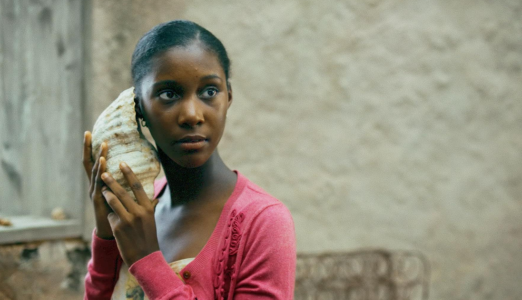The death of cinema?
The loss of celluloid and the tyranny of digital. By Jay Weissberg

Two friends of mine have written books about the death of cinema. Joe McElhaney’s “The Death of Classical Cinema”, published in 2006, is a brilliant study on the perceived shift from classic narrative filmmaking to modernism; Paolo Cherchi Usai’s “The Death of Cinema”, published in 2001, is a poetic meditation on film’s obsolescence, with the subtitle “History, Cultural Memory and the Digital Dark Age.” It’s this latter demise I want to discuss, and the homicide that precipitated it – the murder of celluloid. I’ll lay my cards on the table: I loathe digital. Yet I know it’s the way of the future, and no matter how much I kick and scream, we’re not going back.
Here at TIFF, almost every screening will be projected digitally. Across the globe, even in festivals, 35mm has become a rarity, a nuisance. The thrill I would get from seeing print runners carrying massive metal film cans between cinemas is a quaint memory, replaced by a few uploaded files that don’t weigh a thing. To be honest, I have no interest in going into a projection booth anymore: no whirr of the projector, no flickering light, no slap slap slap sound when the reel ends and the film dangles on the roll. I realize all this is sentimental nostalgia, a rose-tinted Cinema Paradiso recollection (and I hate that movie), so let me get to more concrete explanations.
The digital revolution is financial blackmail, an ukase proclaimed by the people holding the industry’s purse strings. There are two issues here: one is film production, the other is distribution. Starting with the former, we’re told that digital represents a democratization of filmmaking: it’s cheaper, it’s more efficient, and never before has it been so easy for people to make movies. But why is this a good thing? When did “easy” become the guiding principle for an art form? And just because everyone can now make a movie doesn’t mean they should be making movies. You have no idea how much crap my colleagues and I have to sit through, made by people riding the democratic wave of “cheap and easy.”
I know the technology is improving every year, and there are movies shot with the latest HD cameras, used with the right lenses, that approach the quality of celluloid. Yet digital still lacks the tactility of film, the sense of texture and tonal warmth that only real film stock offers. Digital is the equivalent of acrylic paint compared to oil: it’s a harder feel, with harsher colors and a less controllable reproduction of sunlight. In Christopher Kenneally’s terrific 2012 documentary on the subject, Side by Side, Martin Scorsese also makes the painting comparison, arguing optimistically that directors will still be able to make the choice just as artists still choose to paint with oils. But as Keanu Reeves reminds him (Keanu produced the movie and acts as interviewer), a painting doesn’t incur an equal financial burden. Celluloid has become an economic liability, and while directors of the stature of Scorsese can still afford it, most filmmakers aren’t given the option. Don’t forget, Kodak went bankrupt two years ago – Kodak!
There are directors who’ve embraced the new format: David Lynch says he’ll never go back to celluloid (after sitting through Inland Empire, I have no interest in seeing what else he can do with digital), and Peter Greenaway announced back in 2007 that cinema was dead. You can even watch his 90-minute lecture on the topic, available on YouTube. Personally, I haven’t the stomach for his empty provocations, and for me at least, the movies he’s made on digital don’t hold a candle to his work from the 1980s and ‘90s. James Cameron says “film has been dead in my heart for ten years.” If only he’d give up directing completely….
Then there’s the question of projection and distribution. Even films made on 35mm, or 16 (there’s a very good Indian noir that premiered in Cannes last month, shot on super-16mm, called Titli) have to be transferred to digital, since film projectors are becoming obsolete. A few years ago I received an e-mail from the great cinematographer André Szankowski: he questioned comments I made in a review of Lines of Wellington, asking if I caught the press screening or the public one. Apparently the DCP had problems in the press screening, but was fine later – I told him I was terribly sorry, but we can’t always tell when it’s a DCP problem and when it’s the print.
I know there are benefits to digital. It’s enabled an extraordinary revolution in the quality of film restoration (BUT unless the film is transferred back to celluloid, preservation problems are immense). Also, DCP has led directly to the rise of cinemas here in Romania, and for that I must be grateful. Yet I keep wondering what kind of Faustian bargain we’ve gotten ourselves into: even archival festivals now screen more and more on DCP, and audiences are losing the ability to recognize the difference. I wonder: with more people watching movies on phones or tablets, will anyone care that there is a difference?
Published in AperiTIFF, the daily newspaper of Transilvania IFF.





